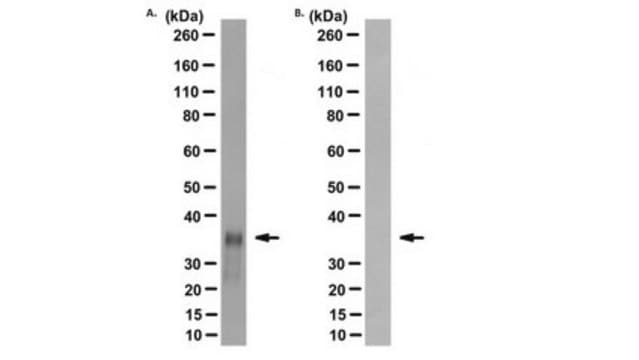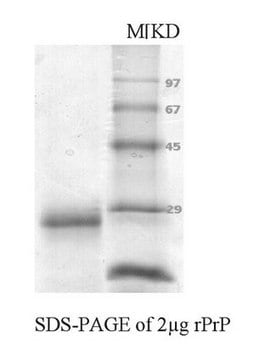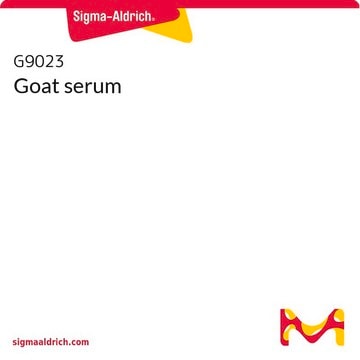P0110
Anti-Prion Protein antibody, Mouse monoclonal
clone 8H4, purified from hybridoma cell culture
Sinónimos:
Anti-AA960666, Anti-CD230, Anti-PRIP, Anti-PrP<C>, Anti-PrPSc, Anti-Prn-i, Anti-RP23-401J24.1, Anti-Sinc
Seleccione un Tamaño
613,00 €
Seleccione un Tamaño
About This Item
EM
FACS
ICC
IHC
IP
WB
flow cytometry: suitable
immunocytochemistry: suitable
immunohistochemistry: suitable
immunoprecipitation (IP): suitable
indirect ELISA: suitable
western blot: 2-4 μg/mL using mouse brain extract
613,00 €
Productos recomendados
origen biológico
mouse
Nivel de calidad
conjugado
unconjugated
forma del anticuerpo
purified immunoglobulin
tipo de anticuerpo
primary antibodies
clon
8H4, monoclonal
Formulario
buffered aqueous solution
mol peso
antigen 25-35 kDa
reactividad de especies
bovine, mouse, monkey, human, sheep, rat
envase
antibody small pack of 25 μL
concentración
~1.5 mg/mL
técnicas
electron microscopy: suitable
flow cytometry: suitable
immunocytochemistry: suitable
immunohistochemistry: suitable
immunoprecipitation (IP): suitable
indirect ELISA: suitable
western blot: 2-4 μg/mL using mouse brain extract
isotipo
IgG2b
Nº de acceso UniProt
Condiciones de envío
dry ice
temp. de almacenamiento
−20°C
modificación del objetivo postraduccional
unmodified
Información sobre el gen
bovine ... PRNP(281427)
human ... PRNP(5621)
mouse ... Prnp(19122)
rat ... Prnp(24686)
sheep ... PRNP(493887)
¿Está buscando productos similares? Visita Guía de comparación de productos
Descripción general
Especificidad
Inmunógeno
Aplicación
- immunoblotting
- flow cytometry
- immunocytochemistry
- immunoprecipitation
- immunoelectron microscopy
- immunohistochemistry
- enzyme linked immunosorbent assay
Acciones bioquímicas o fisiológicas
Forma física
Cláusula de descargo de responsabilidad
¿No encuentra el producto adecuado?
Pruebe nuestro Herramienta de selección de productos.
Opcional
Producto relacionado
Código de clase de almacenamiento
12 - Non Combustible Liquids
Clase de riesgo para el agua (WGK)
nwg
Punto de inflamabilidad (°F)
Not applicable
Punto de inflamabilidad (°C)
Not applicable
Elija entre una de las versiones más recientes:
Certificados de análisis (COA)
¿No ve la versión correcta?
Si necesita una versión concreta, puede buscar un certificado específico por el número de lote.
¿Ya tiene este producto?
Encuentre la documentación para los productos que ha comprado recientemente en la Biblioteca de documentos.
Filtros activos
Nuestro equipo de científicos tiene experiencia en todas las áreas de investigación: Ciencias de la vida, Ciencia de los materiales, Síntesis química, Cromatografía, Analítica y muchas otras.
Póngase en contacto con el Servicio técnico








